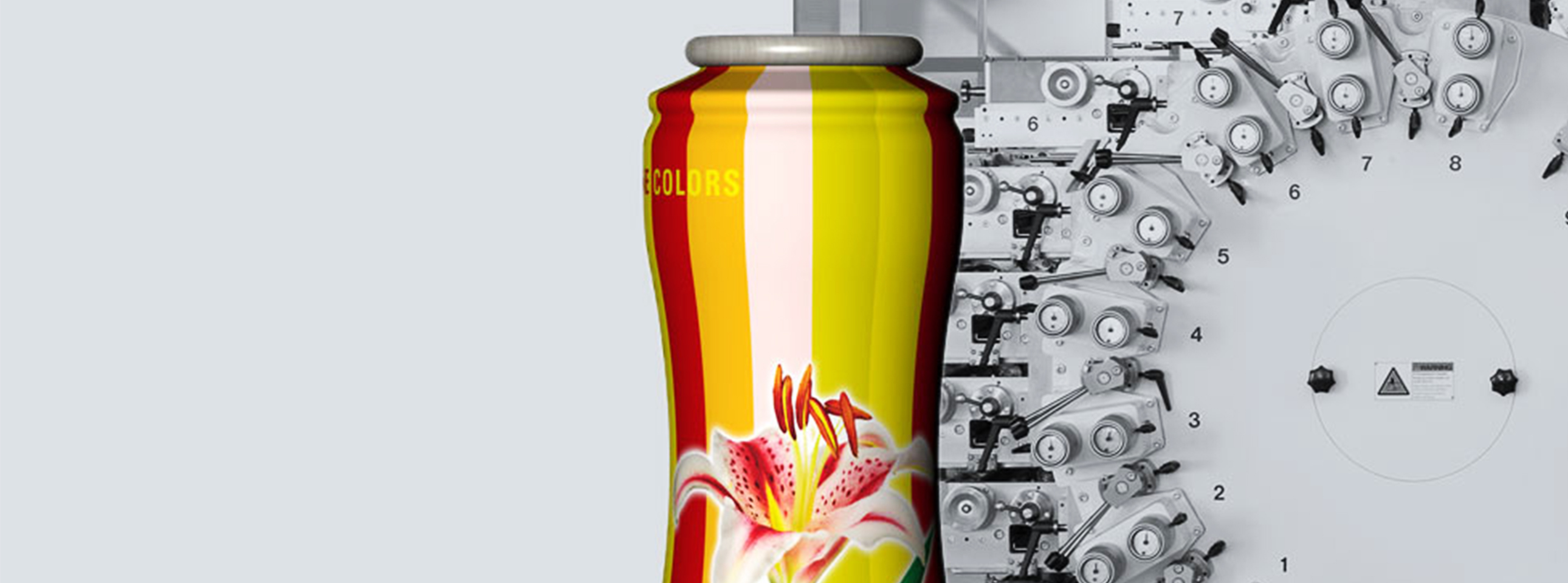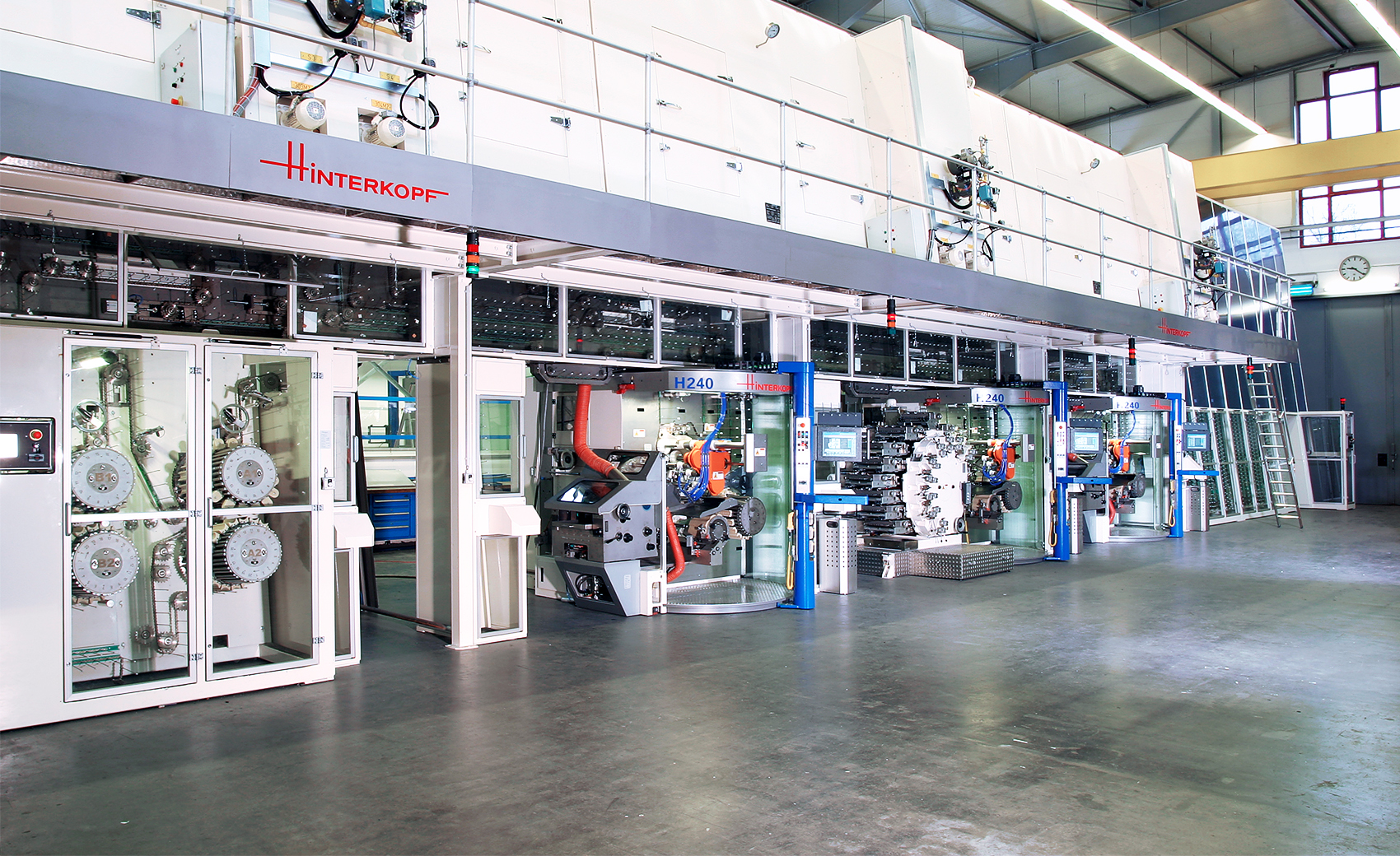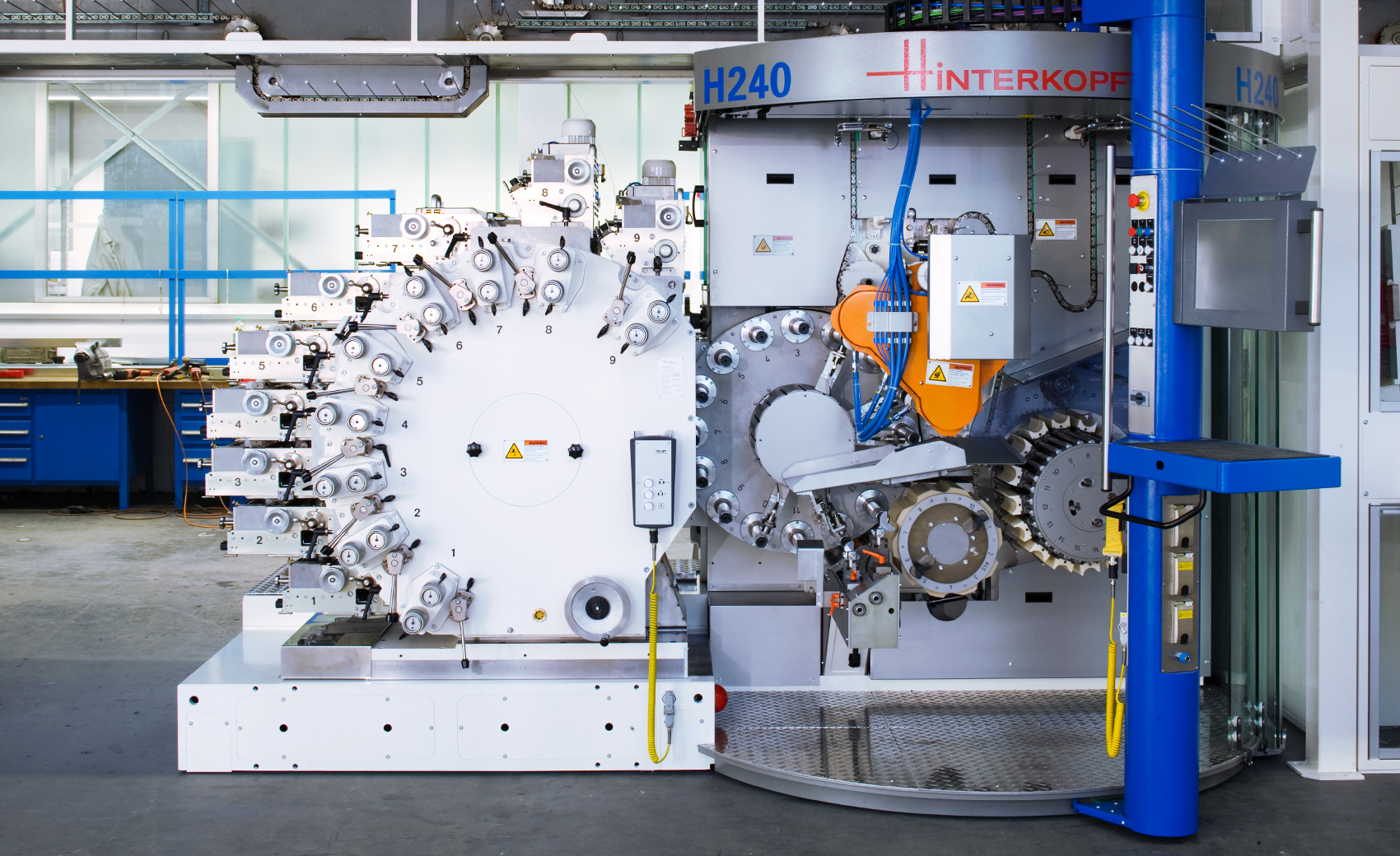Seven In One Blow
The family business Hinterkopf manufactures machines that can produce and decorate tubes, cans and shells. In these machines, the products are moved through the stations of the production line using a vacuum. This vacuum was previously generated by seven individual side channel blowers. Elektror said: we only need one blower for this.
The Starting Situation
Vacuum is an important factor at Hinterkopf. It makes the transport of different forms of tubes and cans much more efficient, for example, than a gripping arm that one would have to adjust for every shape of can.
The production line at Hinterkopf consists of a basic machine that moves the cans to individual stations bit by bit, where additional production steps such as lacquering and printing are carried out. All these paths are realised with vacuum.
The previous solution by a reputable competitor consisted of seven side channel blowers that generated the vacuum individually or in pairs at the respective station. Each of these had to be reduced manually, which meant high energy losses. The side channel blowers also generated a lot of unnecessary and harmful heat, and also took up a lot of room. And if there were any problems, all seven devices had to be checked for faults.
Consulting
When Rainer Balle, our field technician, found out about this during a visit, he claimed modestly that there was a better way to do this.
He proposed to have the vacuum generated centrally by one device. This should make it possible to continue to maintain a vacuum in all connections between the basic machine and the stations without needing to have individual devices operate everywhere. In other words, we replace the seven side channel blowers with a single device – no vacuum aggregate (that didn't work), but one blower.
Process Engineer Oberacker thought the previous solution was never really fully developed, but for many years there seemed to be no alternative, and so Balle's proposal surprised him. A single blower was supposed to be powerful enough to generate the entire pressure for a central vacuum system?
The Solution
Elektror knew that the blowers of the BOOSTED-series had more than enough power. Based on the diagrams, sketches and specifications provided by Mr. Oberacker, the construction of this special Hinterkopf solution was started. After all, a BOOSTED-blower was supposed to replace seven side channel blowers and supply a 30 meter long system with a regular vacuum supply.
To achieve this, the system required an extensive pipe system. The pipe lengths, i.e. the distances from the stations to the blower, are of course very different. That is why it was important to create a uniform pressure situation. Steffen Gagg of Elektror carried out numerous measurements, calculations and optimisations on the Hinterkopf premises – and finally he succeeded.
The end result was impressive: a stable vacuum with little energy input, less generated heat, less noise and less space required.
In the Hinterkopf construction, the HRD with 15 kilowatt drive power replaces the work of 3x4.5 and 4x2.2 kilowatt of the previous seven-blower solution.
The device is equipped with an after-lubrication mechanism and is therefore in line with the maintenance-free lifecycle of the bearings promised by Elektror.
HRD 7 FU 120/15 BOOSTED-Series
Vacuum operation:
- Volumetric flow rate up to 40 m³/h
- Pressure up to 17500 Pa
- Weight: 138 kg
- Power consumption: 15 kW
The Result
The system is in use around the clock seven days a week and runs without a problem.
The blower is currently operated with 90 Hz; this can be increased up to 120 Hz. For Hinterkopf, this means that even if the requirements change, there is still sufficient power reserve. Thanks to the electronic frequency converter, no energy is wasted, as was the case with the manual reduction in the previous solution.
With this construction, Hinterkopf saves significant energy with every system. In addition, the cost of acquisition (one device instead of seven) is lower. The machine makes less noise and takes up less space. In brief: Hinterkopf is fully satisfied.



